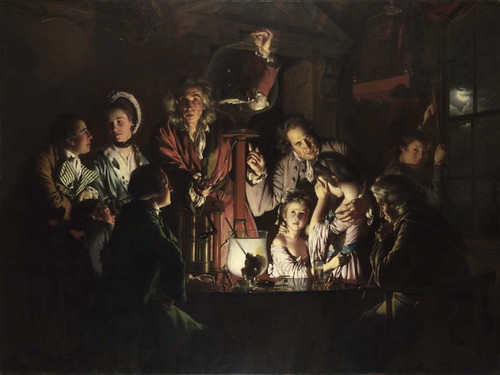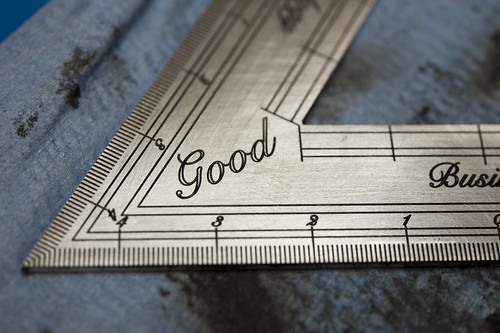Last visit to London, I made a quick stop at the National Gallery in London to see this for real, Joseph Wright of Darby’s “An Experiment on a Bird in the Air-Pump”, which has relevance for me from my work and interests in the history and social studies of science. This was one of those odd tourist-y moments for me, I enjoy doing the not-for-tourists activities — think “go local, go native” — rather than “seeing the sights.” Need to get over that, I suppose.
In this case, I got excited a day or two before arriving to London as I was giving a talk in Aberdeen Scotland and sought a digital image of this painting as I was preparing. When I realized the original was at the National Gallery and that I would be able to see it face-to-face, the weekend in London took an entirely new urgency.
The Air Pump was the Cyclotron of its day, in the 18th century, as best explicated by Steven Shapin and Simon Shaffer’s remarkable historical investigation of the late prehistory of modern science in Leviathan and the Air-Pump. I’m turning back to this material, especially as I hash through new thinking on the role of the “invisible” behind-the-scenes technicians of design fictions.

The image provides a useful backdrop with which to tell the story that Steven Shapin does of the “Invisible Technician” who does the important hand- and craftwork, placing the action of creating knowledge, or matters-of-fact or, to stitch in Bruno Latour’s considerations on these points, the matter-of-concern. Between the reified, established matter-of-fact and the speculation, or imagining of what that might be, is the craftwork of making things — this “invisible technician.”
Parenthetically, at the time I was first studying this bit of social, technical and science history, I was mostly interested in this idea of the invisible technician as a metaphor for the backstage work done within science films — mostly science fiction films — by the moment of the films’ production. I was curious how invisible technicians as described by Shapin could also be the invisible technicians who translate a very imaginary world into one that appears as actuality, as a bit of fact based in science principles. The invisible technician was the production people, mostly in my mind the special effects artisans who are able to create this representation of reality, removing the wires of production to create a truly compelling visual story about what could be. I wanted to learn about special effects as a way of creating visions of a possible world and use the visual story as a point of departure for conversations about more habitable environments. Telling stories, through images, of possible near-future worlds – that about sums up this point.
In the painting, we see the Air-Pump apparatus and its demonstration by a traveling scientist of some sort, visiting a (likely well-to-do) family to share the most recent advances of knowledge of the day. Prior to this was the hard spade work that Robert Boyle and, to a large extent, his assistants, craftsmen, artisans, etc., who had to create the necessary experimental materials to turn the fiction of a vacuum into a demonstrable fact.
As with all good knowledge work, there was perhaps more material effort — making things, enduring material failures, etc. All the things we can comfortably take for granted today were high technology at the time — the 1660s. Blowing glass to create a large containment vessel without the kinds of flaws and defects that would cause it to collapse under the pressure of the atmosphere was very much rocket science. Creating seals to keep the air from leaking was high technology for the leather smiths employed to create cocks and fittings. Etc. The painting shows the result in a fashion, as well as a tableau of the various social and cultural meanings of the absence of matter, something that had religious significance, as does most such bold adventures into the unknown.
Why do I blog this? A canonical image of the relationships amongst knowledges and their circulation, spectacle and theater. Meme propagation in the pre-history of networks, where ideas spread by presentation, in-home sharing and worn boot leather.
Continue reading Experiment With A Bird In The Air-Pump

